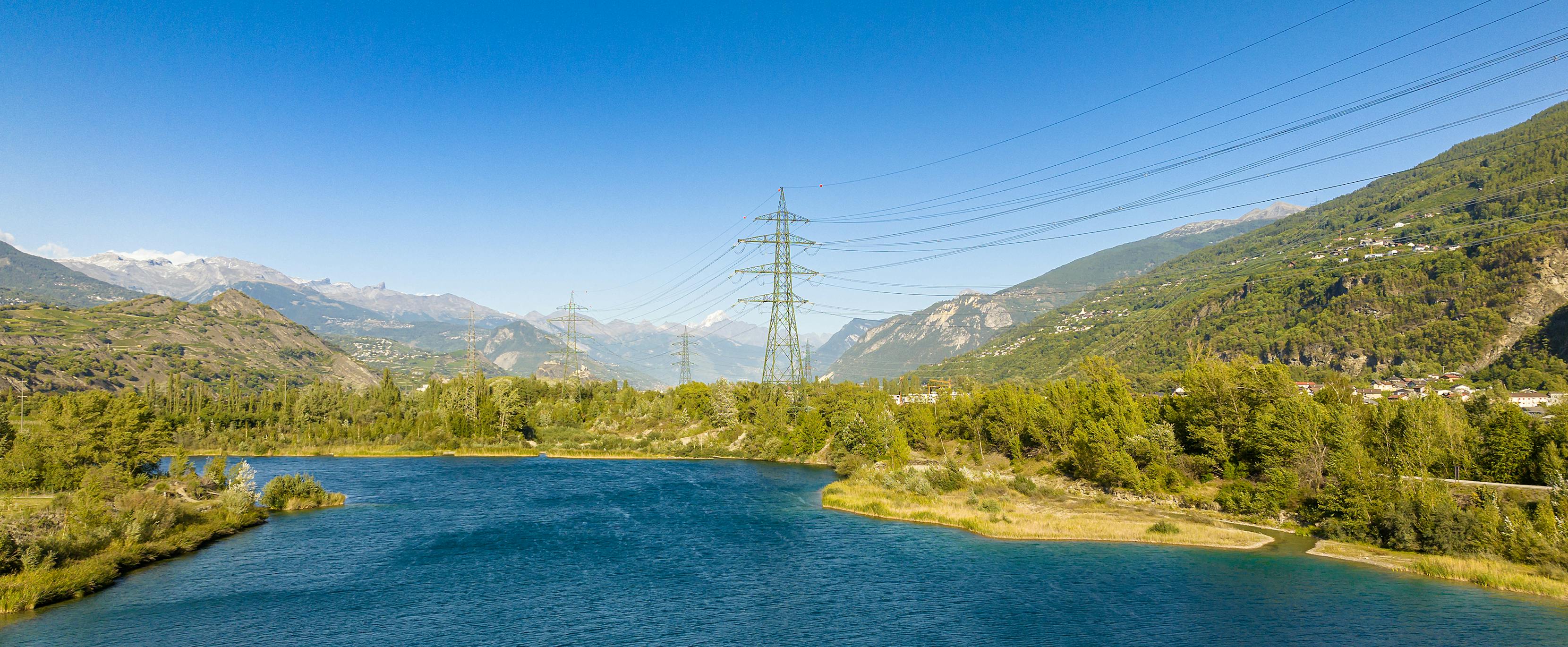
The line project between Chamoson and Chippis in the Valais holds an inglorious record. It took 36 years from the start of the project to the commissioning of the line. The «Grid express» proposal could speed up such lengthy procedures in the future – thanks to a fundamental streamlining of approval processes and an overhead line principle. This is vital to allow the electricity grid to keep pace with the expansion of renewable energies.
Following the clear adoption of the Federal Act on a Secure Electricity Supply from Renewable Energy Sources in summer 2024, Switzerland reaffirmed its intention to expand renewable electricity production and strengthen security of supply. In addition, approval processes for grid projects need to be accelerated in order for the transmission grid to keep pace with the expansion of electricity production. This is because it must be possible to transport the energy produced by the new production plants.
Long approval processes, objections and legal proceedings are delaying grid expansion
It currently takes an average of fifteen years from the start of a project to the commissioning of a new line in the extra-high-voltage grid. However, objections and legal proceedings repeatedly lead to even longer delays, causing projects to take up to 30 years. The Chamoson – Chippis project broke all the records, for example. It took 36 years from the initial project idea to commissioning in autumn 2022. At this rate, the energy transition will not succeed.
How the «Grid express» proposal could speed up the approval process
The «Grid express» proposal includes various urgently needed measures to accelerate the approval process. The greatest effect will be achieved by dispensing with a sectoral plan procedure when replacing lines and by introducing an overhead line principle, as set out in the consultation draft.
Today, a sectoral plan procedure must be carried out in most cases when replacing a line. This involves working through various options regarding the location of the line, despite the fact that only the electricity pylons actually need to be replaced due to their age. Given the complexity of these procedures, it takes an average of around four years, or in some cases much longer. The «Grid express» proposal now stipulates that a sectoral plan procedure of this kind is no longer necessary if existing lines are being replaced along the previous route. Dispensing with a sectoral plan procedure when replacing a line can shorten the project duration by two to four years and is therefore crucial for speeding up the approval process.
A project can be accelerated by up to four years by dispensing with a sectoral plan procedure for line replacements
For every new grid project, Swissgrid also currently has to examine variants using the two available technologies: overhead line (on pylons) and underground cabling (below the ground). As it is not possible to have a large proportion of underground cables in the transmission grid for physical and operational reasons, and given that underground cables are up to ten times more expensive, the «Grid express» proposal introduces an overhead line principle. Underground cables should be an exception. This is because the considerable additional costs of underground cables must be borne jointly by all Swiss electricity consumers and are driving up electricity prices unnecessarily.
An efficient electricity grid is the linchpin of the energy transition. The expansion of renewable energies can only succeed if the electricity produced can be transported efficiently and on time to the places where it is needed. The «Grid express» proposal is an important step towards reducing delays in grid projects and providing the urgently needed infrastructure more quickly. In this way, we are laying the foundations to ensure that the Swiss electricity grid can keep pace with the dynamics of renewable energies. This will prevent the electricity grid from becoming a bottleneck in the energy transition.



